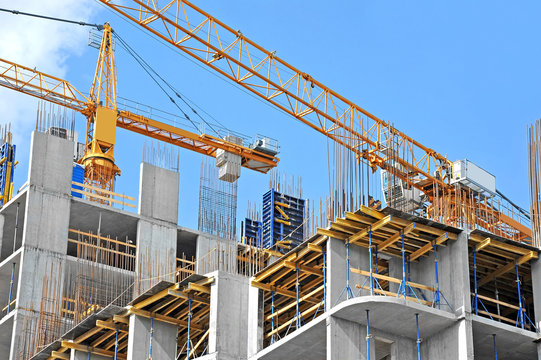Facility management is more than just managing buildings. It’s focused on maximizing the efficiency of operations, cutting costs while also ensuring that the occupants remain happy throughout the lifespan of the building. Today, today, in the age of digital technology, Building Information Modeling (BIM) is a key element in transforming the way we manage facilities to be a more effective process that is driven by data and information. The traditional application of BIM is for designing and construction; however, BIM has expanded beyond these fields to provide benefits over the long term of the operation of buildings and their maintenance.
Understanding BIM in Facility Management
BIM is a method that involves the development and administration of Digital representations of the physical and functional aspects of building structures. BIM models can be more than just a physical representation. A BIM model is more than a simple 3D model. It provides detailed information about the materials, equipment, and systems, and details on performance.
When integrated into the facilities management system, BIM becomes a living digital asset. Facilities managers have access to the most current and accurate information that assists in more informed decisions and quicker resolution of issues. It also leads to enhanced efficiency throughout the day. 
From Construction to Operation: A Seamless Transition
Construction projects do not cease when construction is complete. The operational phase usually accounts for 70-80 percent of the cost over its entire life. Unfortunately, typical administration of facilities is dependent on documents or even a handful of scattered digital documents that could be outdated or inadequate.
BIM can be used to produce a precise, organized data se,t which is delivered to the buyer following the construction. This contains specific information on every component of the structure, including the manufacture and design of HVAC units to maintenance schedules, warranty information, along system diagrams. This continuity of digital data ensures that the transition from construction to operations is smooth and efficient.
Key Benefits of BIM in Facility Management
1. Centralized Information Access
BIM is the main data hub that provides construction information. Facilities personnel can access information about room layouts, machinery, and systems, all within a snap. If you need to locate a shut-off valve or even plan maintenance of an elevator, all the data is available in BIM. There is no need to look for file cabinets or spreadsheets.
2. Improved Maintenance Planning
With accurate asset information and maintenance schedules in the BIM’s BIM models, facilities managers are able to schedule maintenance promptly. This approach helps to reduce the time it takes to maintain as well as prolong the lifespan of equipment and decrease the necessity for urgent repairs.
3. Space and Asset Management
Facility managers may use Building Information Modeling for monitoring space use and occupancy rates as well as the location of equipment. This assists in maximising space scheduling, reallocating space for various purposes, and keeping the current inventory of furniture as well as equipment.
4. Energy Efficiency and Sustainability
BIM lets you monitor the patterns of energy consumption in addition to the effectiveness of the data. Facility managers could use the data to pinpoint places of waste, cut energy usage, and then implement sustainable programs. In time, this will lead to less energy consumption and improved environmental performance.
5. Faster Issue Resolution
If there’s an issue, such as an occurrence of leakage in the form of water or a malfunctioning electronic panel, BIM allows teams to identify the component that is affected or the system. By having full documentation, this can identify and resolve the issue promptly, thereby reducing disruptions and costs.
6. Integration into FM Software
Modern BIM platforms are compatible with facilities management applications (CAFM or CMMS) as well as IWMS. This makes it easier to record work requests, maintenance records, and inspections. All of this is linked to the 3D models of the structure. The integration procedure streamlines the process and improves accountability. 
Challenges in Adopting BIM for Facility Management
The benefits are area.r However, there are concerns to consider:
- Skills and education, Facility managers might require education in understanding BIM data, and using the relevant equipment in a way that is efficient way.
- High Quality Data The quality of BIM data is based on the frequency with which it is maintained throughout the phases of design and construction.
- Integration Costs Connecting BIM to existing Facilities Management Systems may result in the creation of initial costs along with technical modifications.
- Change Management Transitioning away from conventional methodologies towards BIM is going to require a change of culture in how teams work together and share data.
However, these issues can be beaten with careful preparation, skilled implementers, and the ddedicationall parties.
Future Outlook: Digital Twins and Smart Buildings
The value of BIM for the administration of facilities will continue to increase. The rise of digital twins–dynamic real-time digital replicas of physical assetsBIM is the basis. BIM is the base. In connecting BIM alongside IoT sensors within structures, building systems, and real-time analytics, analytics managers can monitor the building’s performance continuously, identify the signs of problems before they happen, and develop “what-if” scenarios for improvements.
Conclusion
BI, also known as BIM, or Building Information Modeling, has developed from its humble beginnings in design and construction and is now a viable method to manage long-term buildings. From streamlining maintenance to improving efficiency in energy use and facilitating the implementation of intelligent building technologies, BIM offers clear advantages throughout the life cycle of buildings. To cut costs, boost performance, enhance the experience for occupants as well, and increase the occupant’s experience, implementing BIM for the administration of facilities is not an option but rather a necessity.
